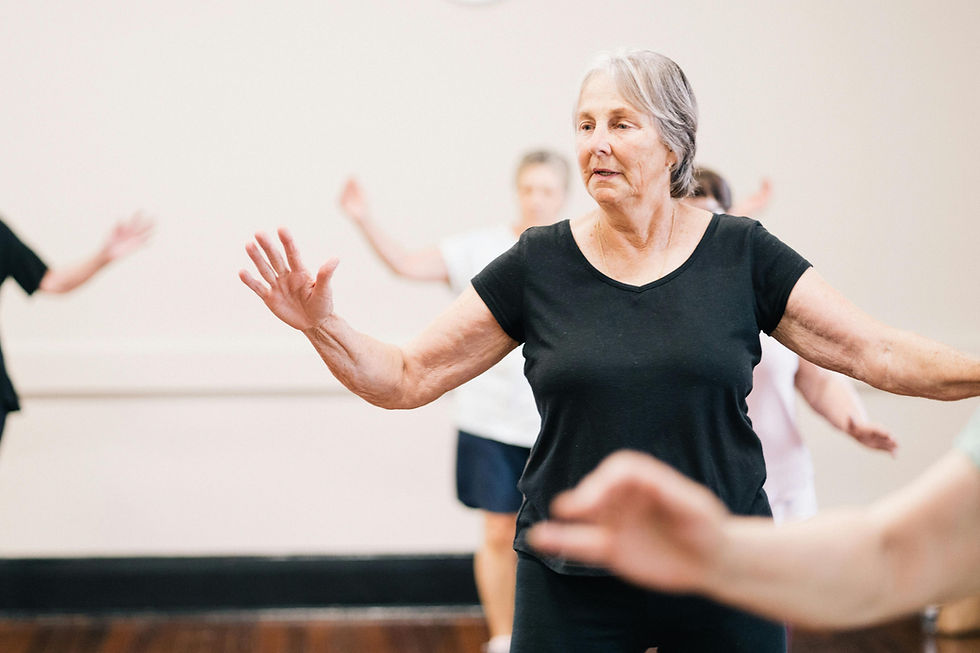Rest and Strength: How Better Rest Supports Strength and Daily Function in Older Adults
- Coach Ricardo

- Oct 10
- 4 min read
Updated: 5 days ago
Why Rest Matters More Than You Think

Recovery is one of the most overlooked aspects of fitness, yet it is just as important as exercise itself, especially for older adults. While strength training, mobility work, and cardiovascular exercise all support independence, quality rest is what allows your body to repair, recharge, and adapt.
At Resilient Training, we see firsthand how rest affects mobility, balance, and overall strength. Older adults who prioritize recovery experience less stiffness, improved energy, and greater confidence in daily activities.
What You’ll Learn in This Article
By the end of this post, you’ll understand:
Plan Rest Days

Your muscles and joints need downtime to rebuild and regain strength outside from the rest in between sets. Schedule recovery at least 1 to 3 rest days per week, adjusting based on your activity level and intensity to allow your body to adapt and prevent injury.
Best Practice: Treat recovery as part of your training plan, not an optional break.
Common Mistake: Skipping rest, which often leads to stiffness and fatigue.
Incorporate Gentle Movement

Rest does not mean complete inactivity. Light movement on recovery days supports circulation and keeps joints flexible. Walking, easy hiking, leisure bike ride, perhaps a swim is as appropriate and beneficial just like stretching, even gentle yoga can reduce soreness and improve mobility.
Best Practice: Keep movements light and enjoyable.
Common Mistake: Doing too much exercise on rest days, which slows recovery.
Support Recovery with Nutrition and Hydration

Muscles repair more efficiently with proper nutrition.
Include lean protein such as chicken, beans, or fish.
Add a variety of fruits, vegetables, and whole grains.
Stay hydrated to keep joints lubricated.
Best Practice: Spread protein intake across meals for steady recovery.
Common Mistake: Skipping meals or relying on processed foods.
Prioritize Sleep

Sleep is the body’s natural reset button. Deep sleep restores muscle tissue, energy, hormones, and joint health. Establish a consistent sleep schedule and create a comfortable, quiet, and cool sleeping environment.
Best Practice: Limit screen time, alcohol and avoid caffeine close to bedtime to support quality sleep.
Use Recovery Tools

Simple tools can ease soreness and improve circulation.
Foam rollers
Massage balls
Stretching straps
Best Practice: Use gentle pressure with slow breathing.
Common Mistake: Applying too much force, which can cause soreness.
Monitor Progress and Adjust

Track workouts, energy levels, sleep quality, and mobility improvements. Monitoring allows you to identify patterns, adjust intensity, and ensure recovery is effective.
Additional Tips for Successful Recovery
Listen to Your Body: Rest when you feel overly fatigued.
Warm-Up and Cool-Down: Protect joints before and after exercise.
Stay Consistent: Recovery is a lifestyle habit, not a one-time fix.
Mind Mental Health: Stress impacts physical recovery. Try breathing or mindfulness practices like meditation.
Avoid Shortcuts: Do not skip rest or rely on medication instead of recovery strategies.
Frequently Asked Questions (FAQ)
How many rest days should older adults take per week?
Most older adults benefit from 1 to 3 planned rest days or more during beginning stages, adjusted to workout intensity and recovery needs.
Is walking considered rest or exercise?
Walking is highly encouraged at a leisurely pace and can be part of active recovery, helping circulation without overstraining muscles.
What role does sleep play in recovery?
Sleep restores hormones, energy, and muscle tissue, making it one of the most critical recovery tools.
Can nutrition speed up recovery?
Yes. Adequate protein, hydration, and nutrient-rich foods accelerate repair and reduce soreness.
Do I need special recovery tools?
Not necessarily. Gentle movement, stretching, and sleep are most important. Tools like foam rollers can be helpful and encouraged but not required.
Conclusion
Rest plays a vital role in maintaining strength, mobility, and independence. By planning rest days, incorporating gentle movement, supporting nutrition and hydration, prioritizing sleep, using recovery tools, and tracking progress, you can enhance physical performance and everyday function.
At Resilient Training, our programs combine functional fitness with recovery strategies tailored specifically for older adults. Clients gain stronger muscles, improved mobility, and greater confidence in daily activities.
I hope this part 1 of 4 on our recovery series helps you understand the big picture. We'll expand more on the topics of; Stress management, Sleep, and finally Nutrition separately over the next months, so stay tuned.
In the meantime, enhance your mobility and strength while supporting proper recovery with our Fundamentals Series, including Mobility, Daily 10, Core Training, and Better Posture programs are designed to improve movement and staying strong effectively from the comfort of home. Each program can be done independently or combined for a complete, balanced routine.
If you are unsure where to start, try the Mobility Assessment first to discover which program fits your current needs, then begin your first session.
Make recovery simple, move with confidence, and build strength at your own pace.




Comments